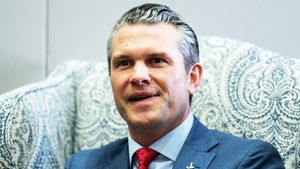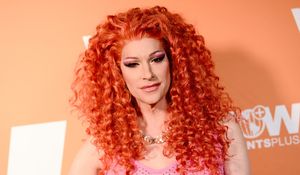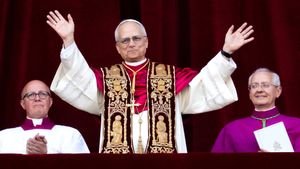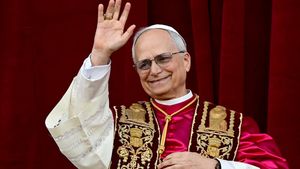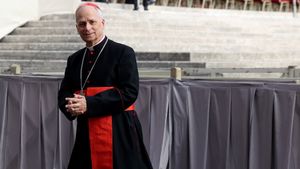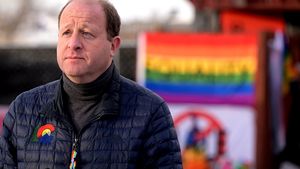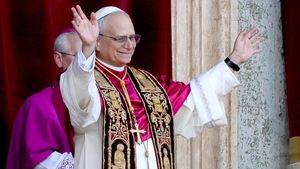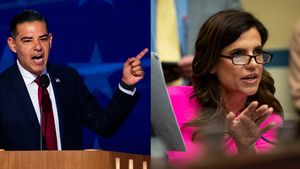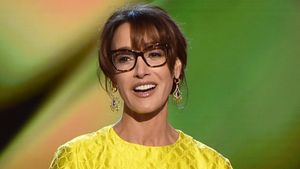When I saw Boys Don't Cry--the film based on the 1993 rape and murder of a young trans man, Brandon Teena -- during its initial release, I threw up in the bathroom of the movie theater. After finishing the film, I went home and, without yet understanding why, re-read Frankenstein, taking what I can only describe as comfort in the "transgender rage" of Victor Frankenstein's creation described by theorist Susan Stryker in her seminal 1994 paper, "My Words to Victor Frankenstein Above the Village of Chamounix." I get all of it now. A monster is, after all, more powerful than a victim.
As a trans woman, Stryker, too, saw something of herself in the wounded being at the heart of Mary Shelley's novel. She notes that trans people who have altered their bodies through surgical or medical intervention--like the "creature"--"rise up from the operating tables of our rebirth." Also like the creature, in order to live honestly, we do not always disappear gratefully into the night, nor do we behave as our medical "creators" intended. Victor did not expect his creature to talk, or feel, or think. He did not, in other words, expect the assemblage of human parts he animated to, in fact, be human. Though Brandon Teena, like many trans people, hadn't received medical intervention, his body was rendered monstrous by the men who killed him. To be a monster, in our cultural narratives, requires correction and, failing that, destruction. As in the Middle Ages, when genetic mutations were considered a beastly externalization of an evil soul, we make some bodies monstrous for just existing. I believe that's one of humanity's greatest collective evils.
But bodies are never monstrous, and Brandon Teena was definitely not a monster. The real monsters in Boys Don't Cry are both on-screen (the men who rape and murder Brandon) and off-screen (the family that continued to misgender and deadname him). The monstrous behavior was that of the audiences in 1999 that "othered" him, and the ill-informed decision to further cast doubt on Brandon's gender by casting cisgender actress Hilary Swank to play him. But, in some ways, the dramatized version of Teena was my own worst fear realized. I didn't know any trans men personally when I first saw the film, and I didn't know yet that I was trans, but I knew that my illegibility scared people.
A decade late--after having top surgery but before beginning testosterone -- began the process of finding my way back to myself through embracing all that I'd been taught to fear about my trans body. I began to love my "otherness," and through that love, I began to think differently about a certain kind of "monstrosity." I read that the origin of "monster" is the Latin word monstrum, a "divine omen," a derivative of monere "to admonish, advise, warn, instruct, teach." The monsters that most interested me, as I ran my hands across the stitched scars along my chest, had something holy to teach us: They rejected the idea that shame was the only reasonable response to their natural state.
Auditing our more modern literary and movie villains, as I've done ever since, creates a laundry list of brazen queerness--from Disney's fierce Maleficent or cunning Jafar, to the fey, trickstery Pennywise a la Tim Curry from the original It. Increasingly, I found something of myself in complicated characters like the ageless girl-vampire, trapped in her tiny form and searching for a friend, in the film Let the Right One In. I found a queer refusal to be contained in the obsessive and murderous teenage lovers of Heavenly Creatures. I found something in Dr. Jekyll's homoerotic dynamic with Mr. Hyde, his "unacceptable" self, his queerly wild side. I even found it in The Talented Mr. Ripley, since Ripley's failure at the con of passing as straight is always just beneath the surface of his sociopathy, and perhaps (author Patricia Highsmith implies) the cause of it. I was (and am) less interested in the chaos that results from this queerness, as I've always understood that to be a projection of cis culture onto our bodies--though, perhaps, also I find myself appreciating the warning these stories seem to telegraph: Cast us out at your own peril. We are powerful and ancient, and worthy of respect. We will not be erased.
This, of course, isn't just about queerness: I'm thinking of the terrifying ghost story about the trauma of slavery that is Beloved; the recent film Parasite's take on the savagery of class; and Jordan Peele's Get Out and Us exposing the legacy of racism in America as the monster it is. Horror can highlight what is truly scary about our culture, or reenforce the fear of the "other" that drives systemic evils. It all depends, in many cases, on who is telling the scary story, and what violences that body has faced.
Still, despite the legacies of queerness and even feminism in horror, I am afraid to write this, because I have found myself in monster stories, and I have also spent my whole life being told a story that I am a monster. It's
hard to reconcile those two ideas without facing the painful legacy of dehumanization of trans bodies in horror stories. Buffalo Bill, the serial killer at the heart of Silence of the Lambs, was clearly designed by cis author Thomas Harris to reflect aspects of being trans, like dysphoria. Harris's book and the subsequent film unfortunately made Buffalo Bill's "dysphoria" the motivation behind his depravity (there is a common defense here that the character isn't technically trans but rather Harris's odd interpretation of gender dysphoria gone evilly awry, but a cis layperson consuming either the book or film in the late '80s or early '90s would hardly be expected to parse that difference).
1999 was the first and last time I threw up in a movie theater, and in recent years I've even found myself working in television. It's now my job to just tell stories about people like me, but also our collective culture, and most importantly what connects us to each other--shadows and all. I think a lot about a wise piece of advice a showrunner friend once gave me: "A story is just where you choose to point the camera." Anybody can be a monster. To make that monstrosity about identity is lazy, harmful writing. But I believe that exploring the villain inside all of us is the central moral task of being a person.
Take 2018's The Assassination of Gianni Versace: American Crime Story, a not-quite-horror but true-crime meditation on evil within gay community looks at the motivations of one of our most notorious serial killers through a gay lens (a lens that made him a far more interesting character by making his gayness central to his life and crimes but not the site of his "evil"). Because two gay men are at the heart of the show--killer Andrew Cunanan and Versace--neither bears the burden of "representing" gayness. As such, the humanity of both men, even the "monstrous" one, is fully
available to us. As viewers, we learn that we can be empathetic and still remain grounded in morality. That is how we integrate our shadows. That is what a scary story, told well, can do: make us all into monsters, if just for a moment, so that we can remember how not to abandon our humanity in the face of what scares us.
As such, I increasingly find myself drawn to projects that cast trans and queer people as anti-heroes, sinners, and even villains. In my own work, I am interested in highlighting the humanity of people like myself, cultural "outsiders," made "other" by culture, with no path to "conventionality" except for a kind of soul death. I have tremendous sympathy for characters who refuse to abandon who they are. If they are made monstrous by this refusal to internalize shame, then that feels more "true," if more gnarly, than many of the more touchy-feely tropes of trans experience: those that focus on "before" and "after" photos, or the happiness that comes from "passing" as cis.
If horror has taught me anything, it's that -- as in real life -- everyone is the hero of their own story. I've re-read Frankenstein every year since 1999, and to me it's now clear that the creature was the hero all along. A "villain" is, after all, merely a character whose aims are counter to those of the hero's. He did not ask to be born, but despite his obvious differences, he repeatedly seeks out connection, until he is utterly and entirely rejected by every person he meets. The horror of the book is not the creature, but the world's reaction to him. Shelley, in her genius, spends the last quarter of her book allowing him to monologue, turning a light back on the very culture that produced him. Shame on YOU, the creature says, and he is right. A triumph.
Because, interestingly enough, horror is an incredible vehicle for empathy. It's all in how you point the camera, and where you're willing to look.
This piece originally appears in Out's Culture Issue, available on newsstands on 2/25. To get an advanced look at the issue, download it for Kindle or Nook, and grab your copy by subscribing now.











